Silver City
Caution! We do not provide turn-by-turn directions in our GPX files. Those are auto-generated by your bike computer and are usually less than 70% accurate. Learn more.
For help loading a GPX file onto your bike computer, go here.
DownloadHighlights & Remarkable Spots
Wagontown Cemetery / ~ Start & End
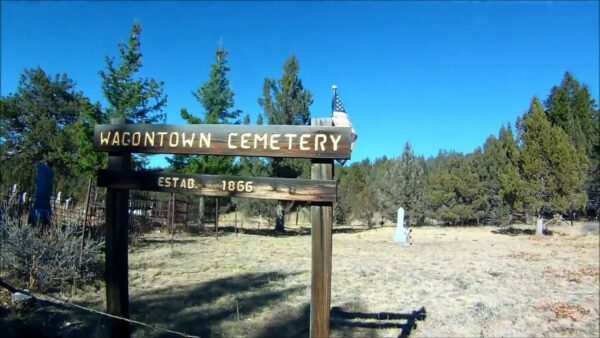
Wagontown was one of the earliest settlements in the DeLamar District. Located near the town of DeLamar, Wagontown was primarily a placer mining operation, with tin being the main extracted ore. Today, all that is left of Wagontown is an old cemetery.
Skinner Toll Road / ~ Miles 1-20
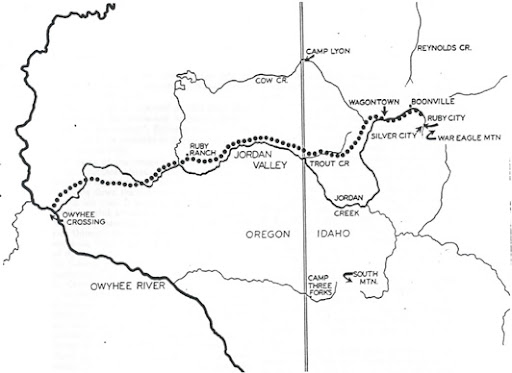
In 1865, Silas Skinner began constructing a toll road by hand, to aid in the transport of supplies for miners and the shipment of precious metals to the West Coast. The Skinner Toll Road, opened on May 19, 1866, linked to a route to Chico, California, and eventually to San Francisco, enabling freight to traverse between Silver City and Chico within a week. As traffic gradually shifted, more freight from Silver City traveled the Skinner Toll Road, leading to Chico via the Sacramento River, rather than the Columbia River route.
Jordan Creek / ~ Miles 1-20
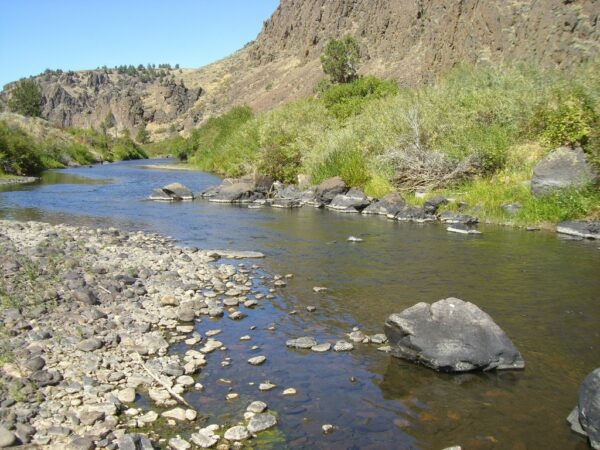
Jordan Creek is a 99 mile tributary to the Owyhee River. It was in this creek that the first gold placers were discovered in 1863, leading to the rush of growth in the area during the heyday of gold and silver mining. Today, Jordan Creek is used for irrigation for local ranches.
DeLamar Mine / ~ Mile 1
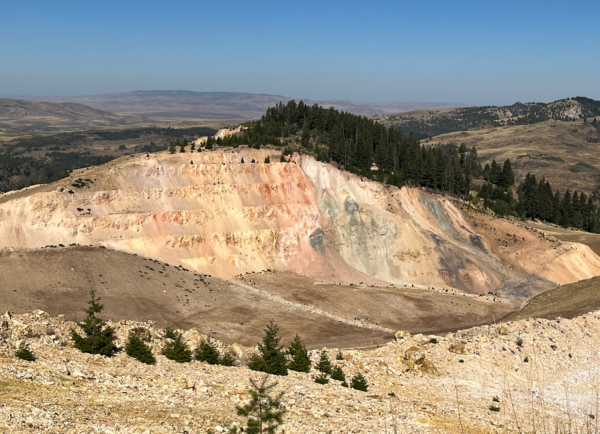
The DeLamar Mine, described as “the first modern open pit silver mine”, operated from 1977 to 1998. It has been reported that 625,500 ounces of gold and 45 million ounces of silver were produced over the life of the mine. In 2017, Integra Resources acquired the project and gold and silver mining is, once again, in active production in this area.
DeLamar Ghost Town / ~ Mile 2

DeLamar, founded in 1888 by mining magnate Joseph R. DeLamar, was a thriving silver mining community nestled in Idaho’s Owyhee mountain range. Situated near Jordan Creek, the town featured a bustling business district and a nearby area known as “Tough Town,” renowned for its lively saloons, livery barns, and red-light district. Modern for its time, De Lamar had electric lighting, telegraph, and telephone connections. The town grew around the De Lamar Mining Company’s central plant, surrounded by mills, residences, and mercantile shops.
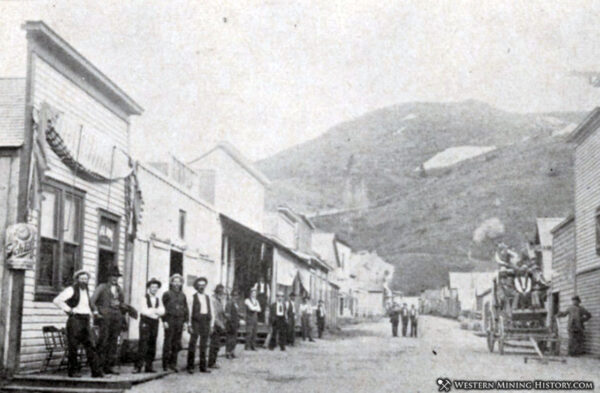
De Lamar’s prosperity was short-lived, with its decline beginning shortly after 1890. It remained inhabited for a few more decades, hosting a summer-only post office until 1930. In 1976, De Lamar was recognized as a historic district on the National Register of Historic Places, although only four original structures remain today, now located on private property within a modern open-pit mining operation.
DeLamar Cemetery / ~ Mile 2
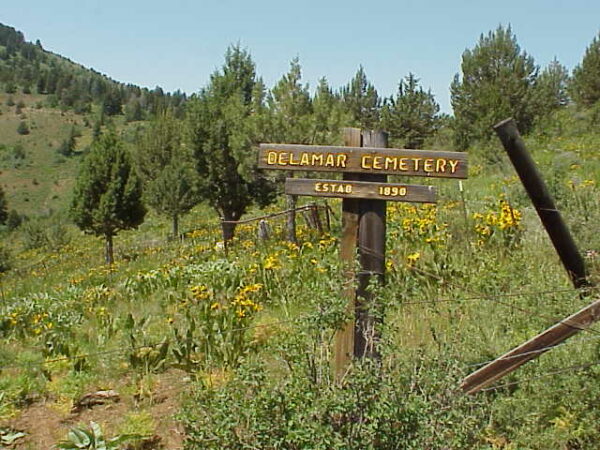
DeLamar Cemetery is a short side trip up a dirt road. Turn north and head up the hillside. You’ll come upon the cemetery, established in 1890.
Aspen Grove / ~ Mile 5
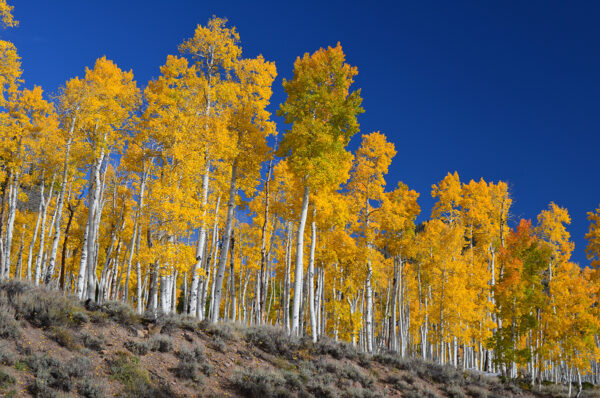
On your right, up on the hill is a grove of Aspen trees. Aspens are the most widespread tree in North America. From the Midwest, across Canada, north into Alaska and across the West through to Arizona and New Mexico, quaking aspens dot the edge of conifer forests in clusters or “clones.” A grove of aspen is recognized to be one organism, meaning each tree is a genetic replica of all the trees in the group. In fact, one aspen grove in Utah is thought to be 80,000 years old, and is considered the heaviest living organism on earth. If you’re lucky to be on this route in the fall, keep your eyes peeled for the vibrant yellows and oranges that aspens are known for.
Dewey Ghost Town / ~ Mile 7
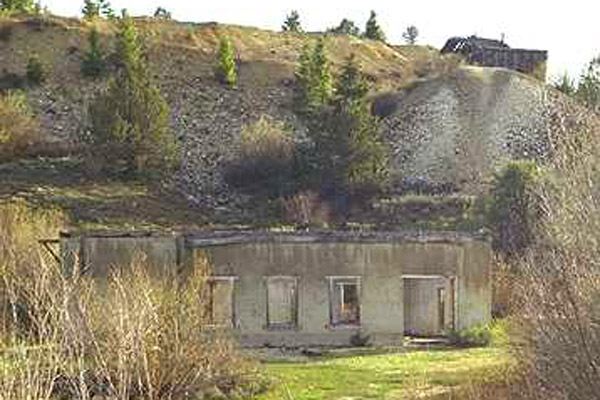
Only the cement power plant ruins and remnants of the mine stand as reminders of Dewey. Initially named Booneville, the town was purchased and rebuilt by Colonel W.H. Dewey in 1896. Renamed in his honor, Dewey flourished briefly with the construction of a grand three-story hotel, a post office, and a twenty-stamp mill. There was even talk of becoming the terminus for the Boise, Nampa, and Owyhee Railroad. However, the town declined as mining activity died, and the hotel succumbed to fire, ultimately leading to a ghost town.
Silver City Cemetery / ~ Mile 9

The Silver City Cemetery holds the remains of over 300 individuals, divided into two sections. The “Masonic” portion, established in 1871, contains around 100 graves, while the “Citizens” section, established in 1876, holds approximately 200. Presently, only about 60 burial plots are visibly marked, with the majority lost to the passage of time.
As you exit town, look to your left for the sign marking the direction to the cemetery.
Silver City / ~ Mile 10
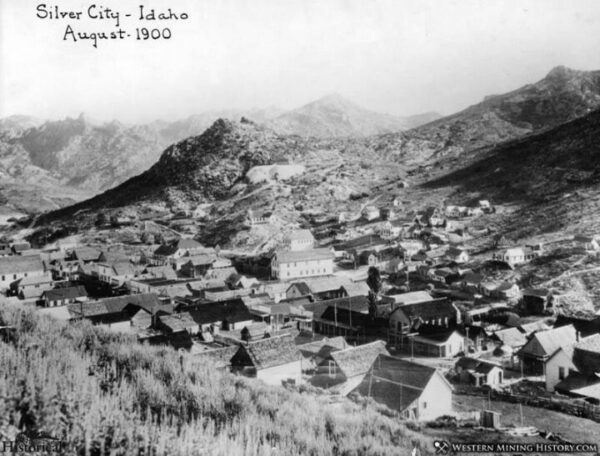
Today, Silver City is kept alive by tourism. Accommodations include a historic hotel, recently outfitted with indoor plumbing. Silver City has two prominent cemeteries—the Masons/I.O.O.F Cemetery and the Silver City Citizens Cemetery. A third cemetery, up Slaughterhouse Gulch hill, bears a simple sign reading “Cemetery,” serving as the final resting place for the town’s Chinese population. Chinese miners made up 21% of the population. Most of the Chinese graves in Silver City were relocated, leaving this Cemetery as a poignant reminder of the town’s overlooked Chinese residents amidst the romanticized tales of its mining heyday.
Credits & Acknowledgements
This ride guide has been funded in part by a grant from Travel Oregon.

When We Like to Ride This
This ride goes up to 6200 feet. Thus, expect a riding season from about May to October. If there is snow in the hills, the ride is a “no-go”. A really beautiful time to do this ride is when the trees are turning color in October.
Silver City can be quite the circus on the weekend. Most people approach from the east side (Idaho). On a busy weekend can expect about 200 cars per day from Idaho side. Coming in from the Jordan Valley side will be much less busy.
Terrain & Riding
Jordan Creek Sector / ~ Miles 0 to 7
At mile 14 you drop down to Slaughterhouse Gulch and enter a small canyon that parallels Jordan Creek. It is dotted with old mining structures in different states of disrepair. Some standing structures, some falling down, some with just a footing. Here is also where the double-wide gravel road narrows and becomes mostly single land. The terrain is grasses, junipers tucked into scattered rock outcroppings, and a mix of aspens and oaks along the creek.
At mile 18 you can take a small spur to the left that leads to an old cemetery. Lat/Long: 43.023760, -116.826724
Silver City Sector / ~ Miles 7 to 10
At ~ mile 7 just after crossing through the creek and at 5900 feet, the terrain quickly changes to pines and aspens. The rock changes to smooth boulders from rocky cliffs and the soil changes to a white sand. Soon you loop into Silver City. Take some time to explore, then return the way you came.
Silver City is one of the few old mining towns that did not burn down or become commercialized into a modern city. Visiting Silver City is like going back into history. The Idaho Hotel is as it was 100 years ago with a few modern amenities. At Pat’s What Not Shop, books, souvenirs, local mineral samples are available. The Silver City Fire and Rescue Store provides art, antiques, gifts & backroom bargains. These are the only three public buildings within the city limits. All other buildings are private and part-time homes to many people. Please be respectful on your visit. Wave, stay on city streets (do not ask to tour someone’s private home!), and be respectful in the pictures you take.
The Return / ~ Miles 10 to 20
Exit Silver City, be careful of traffic for the first 3/4ths of a mile, and then ride back to the start the way you came. It is slightly downhill all the way back to the start at an average gradient of 2%.
The Start
At the junction of Silver City Rd and Slaughterhouse Gulch. There is a large dirt parking area on the north side of Silver City Rd.
Food & Water
- ~ mile 10 / Silver City
Route Notes
Open grazing and cows. Check out our resource page to learn how to pass by cows safely and without raising anxiety in the animals. Whooping and hollering is not the right thing to do.
We recommend a red blinky light with rear looking radar detector like a (i.e. Garmin Varia). The gravel roads along this route have some traffic, and it can be difficult to hear traffic approaching from behind. A Varia type of device really helps.
Route Options
If you are looking for a longer, more rowdy ride, check out Skinner Toll Road ride guide. Two versions: 26 miles / 2500 feet of gain OR 58 miles / 4600 feet of gain.

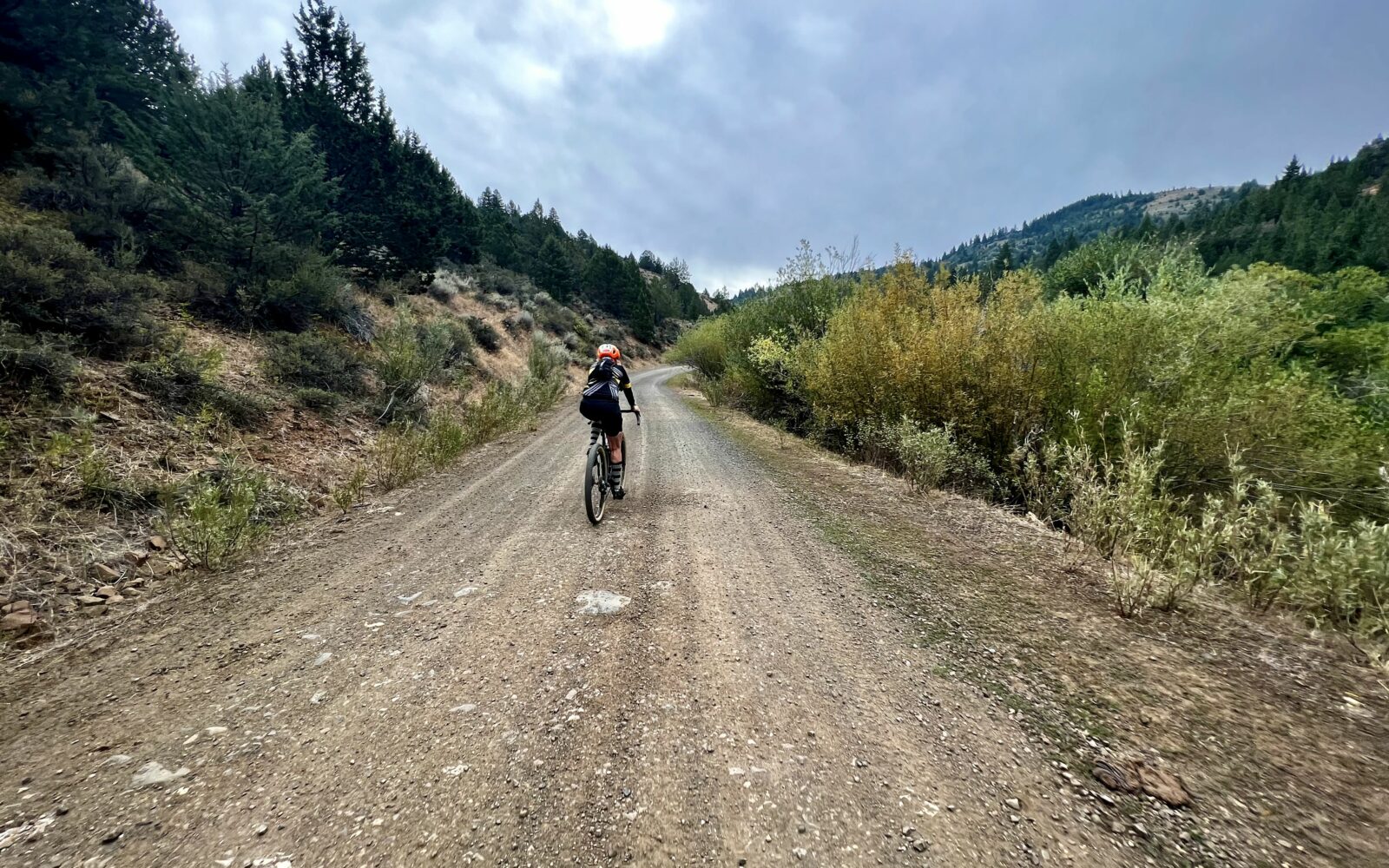






















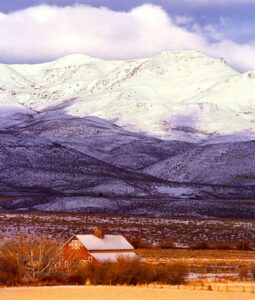



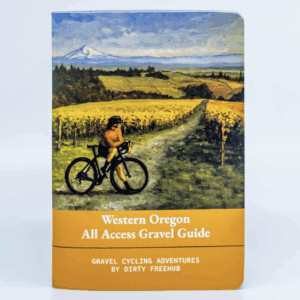
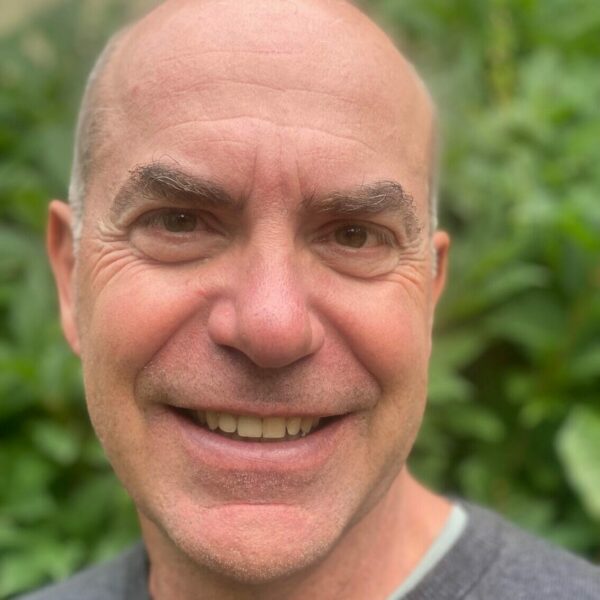

 Behind every route is scouting, mapping, storytelling, and a whole lot of pedal power.
Behind every route is scouting, mapping, storytelling, and a whole lot of pedal power.
Have you ridden this route? Got a question? Join the discussion!